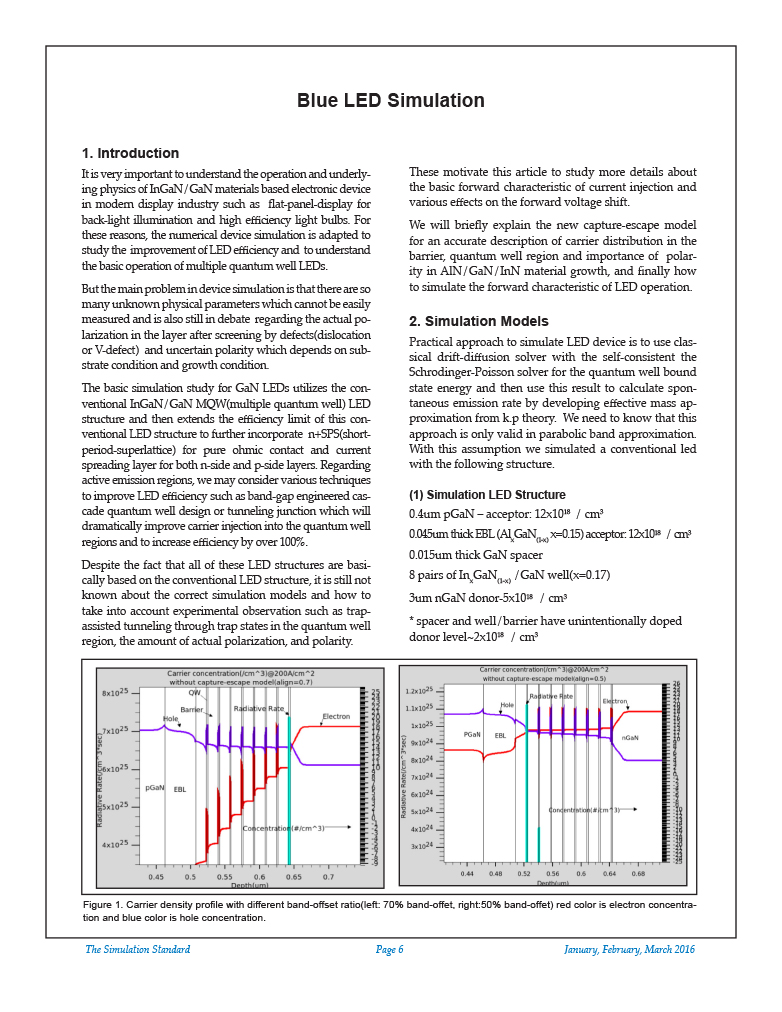Blue LED Simulation
1. Introduction
It is very important to understand the operation and underlying physics of InGaN/GaN materials based electronic device in modern display industry such as flat-panel-display for back-light illumination and high efficiency light bulbs. For these reasons, the numerical device simulation is adapted to study the improvement of LED efficiency and to understand the basic operation of multiple quantum well LEDs.
But the main problem in device simulation is that there are so many unknown physical parameters which cannot be easily measured and is also still in debate regarding the actual polarization in the layer after screening by defects(dislocation or V-defect) and uncertain polarity which depends on substrate condition and growth condition.
The basic simulation study for GaN LEDs utilizes the conventional InGaN/GaN MQW (multiple quantum well) LED structure and then extends the efficiency limit of this conventional LED structure to further incorporate n+SPS (short-period-superlattice) for pure ohmic contact and current spreading layer for both n-side and p-side layers. Regarding active emission regions, we may consider various techniques to improve LED efficiency such as band-gap engineered cascade quantum well design or tunneling junction which will dramatically improve carrier injection into the quantum well regions and to increase efficiency by above 100%.



